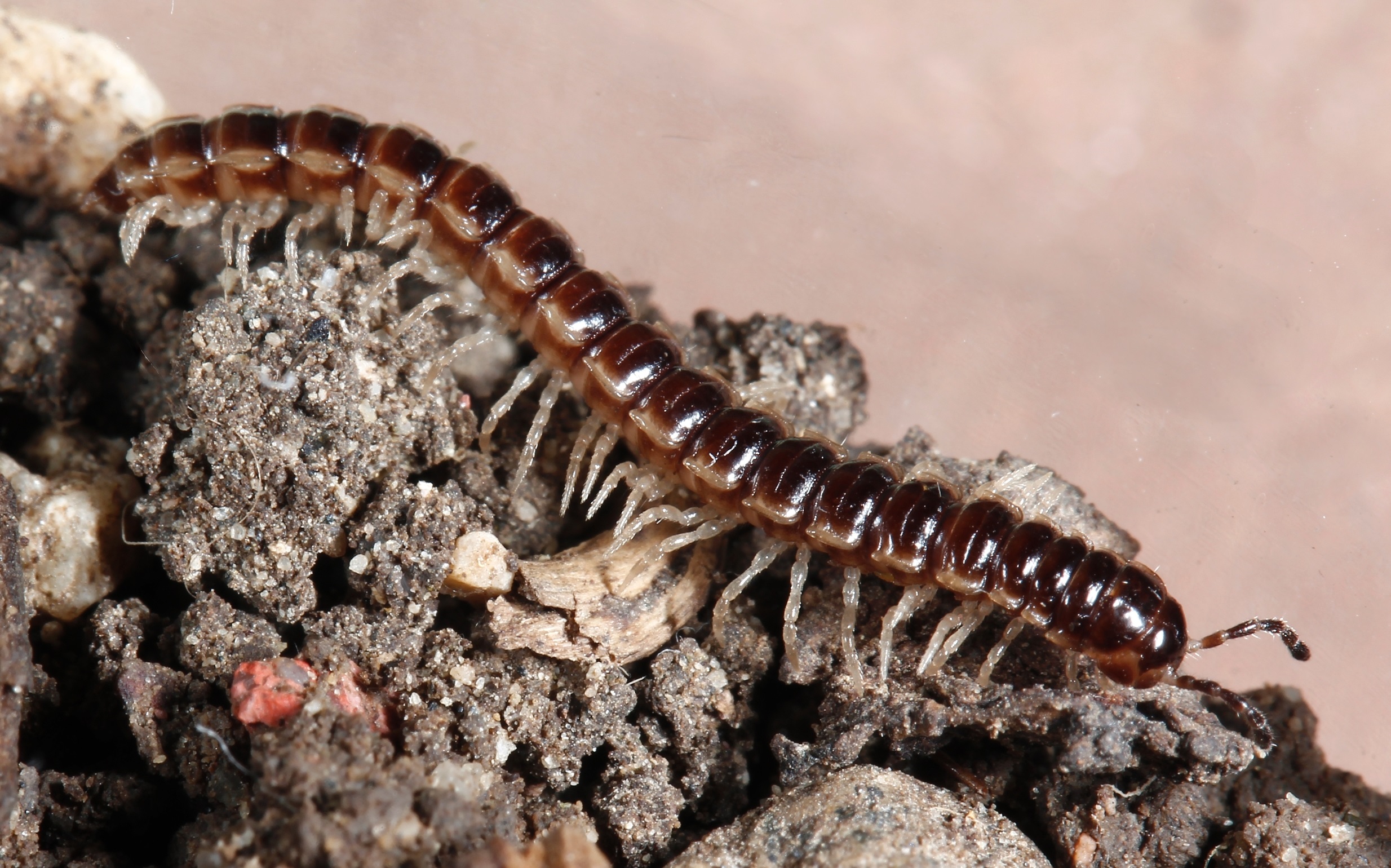Paradoxosomatidae on:
[Wikipedia]
[Google]
[Amazon]
Paradoxosomatidae, the only family in the suborder Paradoxosomatidea (also known as Strongylosomatidea), is a
family
Family (from la, familia) is a group of people related either by consanguinity (by recognized birth) or affinity (by marriage or other relationship). The purpose of the family is to maintain the well-being of its members and of society. Idea ...
of flat-backed millipedes in the order Polydesmida
Polydesmida (from the Greek ''poly'' "many" and ''desmos'' "bond") is the largest order of millipedes, containing approximately 3,500 species, including all the millipedes reported to produce hydrogen cyanide (HCN).
Description
Members of the o ...
. Containing nearly 200 genera and 975 species , it is one of the largest families of millipedes. Paradoxosomatids occur on all continents except Antarctica, and can generally be distinguished by dorsal grooves on most body segments and a dumb-bell shaped gonopod
Gonopods are specialized appendages of various arthropods used in reproduction or egg-laying. In males, they facilitate the transfer of sperm from male to female during mating, and thus are a type of intromittent organ. In crustaceans and millipe ...
aperture. Notable groups within the Paradoxosomatidae include the dragon millipedes of Southeast Asia, and the widely introduced greenhouse millipede '' Oxidus gracilis''.
Description
The family is characterised by several traits. Most species possess a groove or furrow ("sulcus") on the dorsal surface between the keels ( paranota) on each segment, and the keels of the second body segment are situated lower on the body than those of the first segment ( collum) and third segment. In males, the opening on the underside of the body where thegonopod
Gonopods are specialized appendages of various arthropods used in reproduction or egg-laying. In males, they facilitate the transfer of sperm from male to female during mating, and thus are a type of intromittent organ. In crustaceans and millipe ...
s (male reproductive appendages) attach has a central constriction, forming the shape of an hourglass or dumb-bell. Males of most species also possess one or two projections on the sternite of the fifth body segment. Adults may have 19 or 20 body segments in addition the head, and ozopore
An ozopore is the opening of a defensive gland present in some arthropods, notably in millipedes of the order Polydesmidagreenhouse millipede, ''Oxidus gracilis'' likely native to Japan, occurs worldwide, often associated with greenhouses or agricultural settings. Widely introduced species in the tropics include '' Asiomorpha coarctata'' (native to Southeast Asia) and '' Chondromorpha xanthotricha'', native to Sri Lanka or southern India.

 The nearly 1000 valid species of paradoxosomatids are divided into three subfamilies and 22
The nearly 1000 valid species of paradoxosomatids are divided into three subfamilies and 22
Representative Photographs
{{Taxonbar, from=Q3720639 Polydesmida Millipede families
Classification

 The nearly 1000 valid species of paradoxosomatids are divided into three subfamilies and 22
The nearly 1000 valid species of paradoxosomatids are divided into three subfamilies and 22 tribes
The term tribe is used in many different contexts to refer to a category of human social group. The predominant worldwide usage of the term in English is in the discipline of anthropology. This definition is contested, in part due to confli ...
. Most species (over 760) belong to the subfamily Paradoxosomatinae.
Subfamily Alogolykinae - two tribes, around 60 species, central, south, and southeast Asia
*Alogolykini - Myanmar, China, Vietnam, Nepal
*Polydrepanini - Pakistan, India, Myanmar
Subfamily Australiosomatinae - three tribes, around 140 species, Southeast Asia and Oceania
Oceania (, , ) is a geographical region that includes Australasia, Melanesia, Micronesia, and Polynesia. Spanning the Eastern and Western hemispheres, Oceania is estimated to have a land area of and a population of around 44.5 million ...
*Antichiropodini - Australia, Indonesia
*Aschistodesmini - New Guinea
*Australiosomatini - Australia
Subfamily Paradoxosomatinae - 17 tribes, around 760 species, worldwide
*Catharosomatini - South America
*Centrodesmini - Indonesia
*Chamberliniini - Taiwan, Japan
*Cnemodesmini - Africa
*Eroonsomatini - Italy, Balkans
*Eustrongylosomatini - New Guinea, Philippines, Micronesia, Solomon Islands, Seychelles
*Eviulisomatini - Africa
*Graphisternini - Peru
*Nedyopodini - Taiwan, Southeast Asia
*Orthomorphini - Southeast Asia, some globally widespread
*Paradoxosomatini - Europe, middle East, Myanmar, China, India
*Sulciferini - Southeast Asia, some globally widespread species
*Sundaninini - Southeast Asia
*Tectoporini - Southeast Asia
*Tonkinosomatini - Indochina
*Xanthodesmini - Africa, Pakistan
Select taxa
*'' Antichiropus'' *'' Chamberlinius'' *'' Desmoxytes'' **'' Desmoxytes purpurosea'', the "shocking pink dragon millipede" *'' Desmoxytoides'' *'' Orthomorpha''References
External links
*Representative Photographs
{{Taxonbar, from=Q3720639 Polydesmida Millipede families